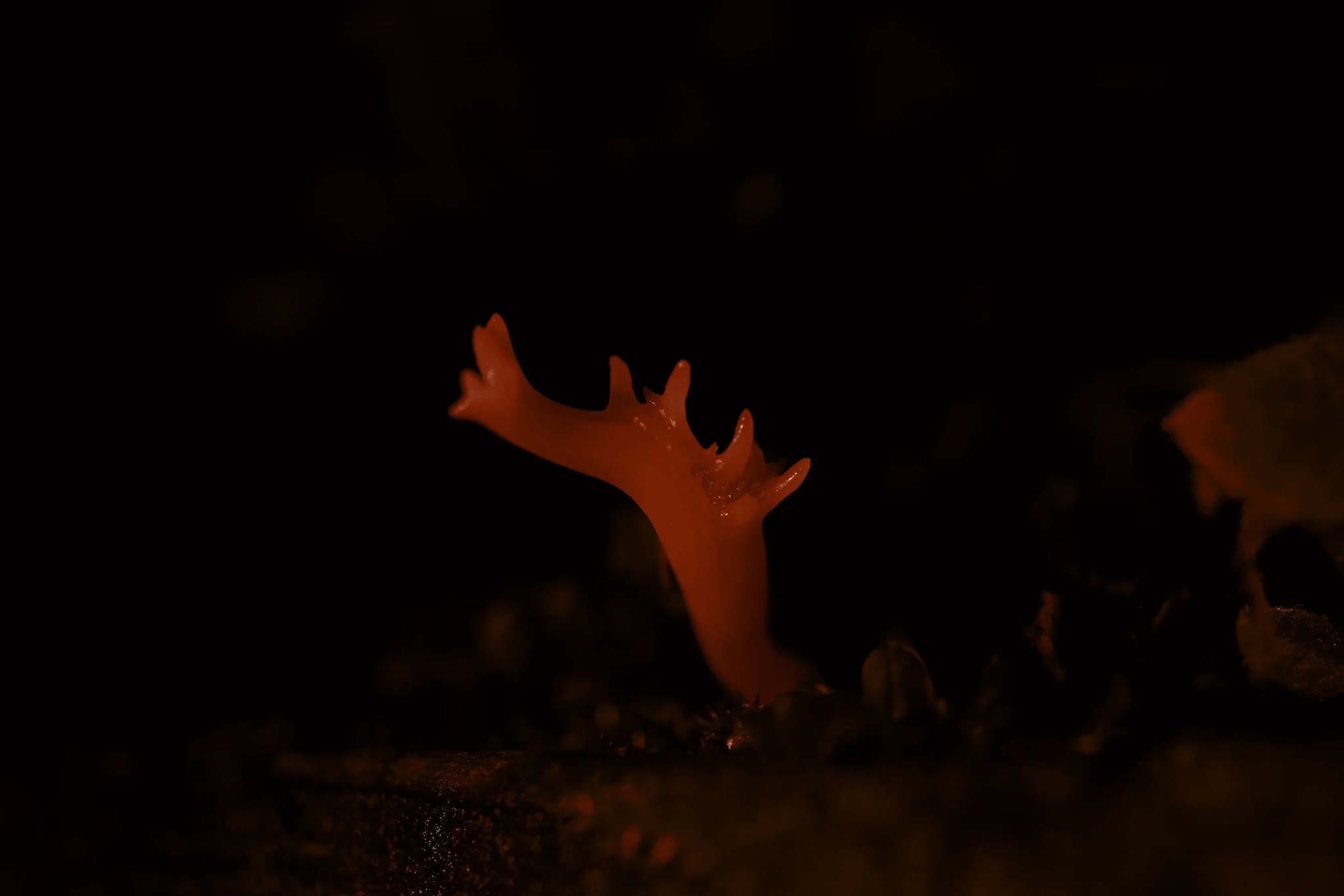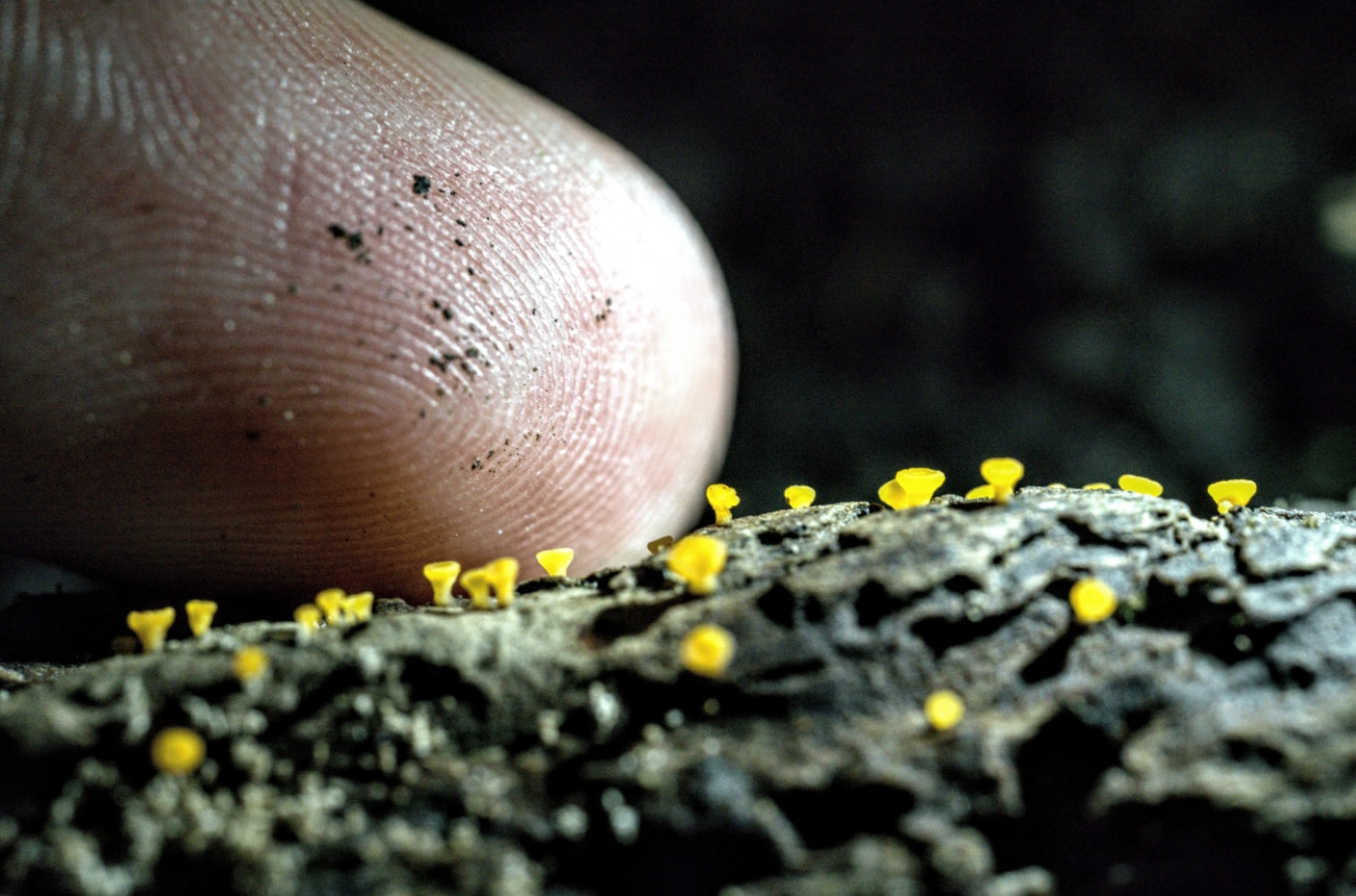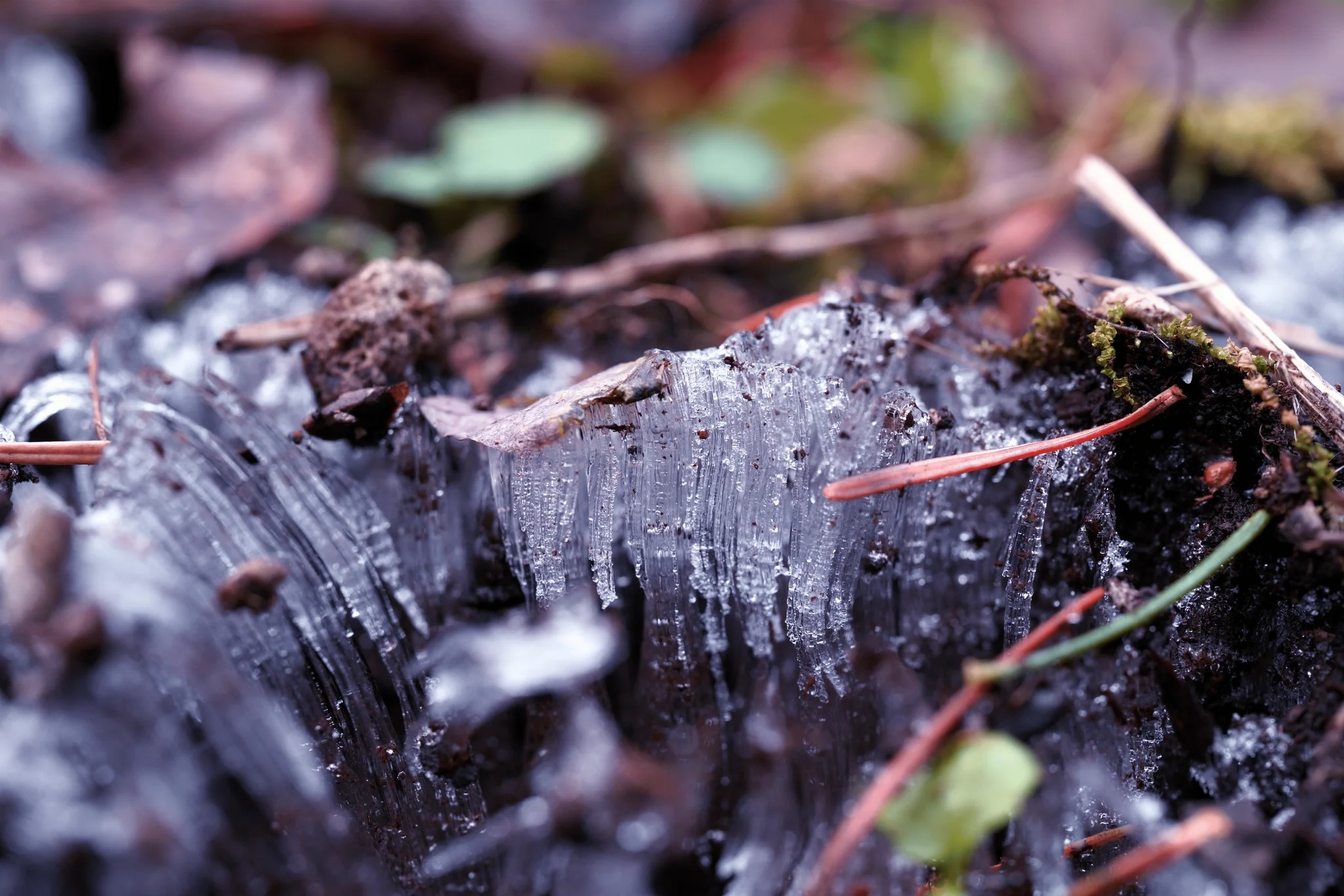2025/01/06 03:00

Written by Andy (Podcast creator)
Born in 1995 and a graduate of Hitotsubashi University's Faculty of Sociology, Andy moved to Shiraoi-cho, Hokkaido in 2020, where he launched “Mimori Radio,” a podcast program focusing on the fun of nature. She also takes macro photography focusing on nature and writes essays. (Currently working on a new program)
Instagram: @andyutaro
Podcast: Mimori Radio
It has been 4 years since I moved to Shiraoi Town located in the south of Hokkaido. It is a great environment that gives me the option of “walking in the forest” as a change of pace from work. Whenever I need a break from all the “abstract things” on display, on paper, and in my mind, I go to the forest to take in the “concrete things” in the forest.
At first, it was just walking. Sometimes I would walk in the forest for a specific purpose, like fishing, hiking, or camping. However, as I walked through the same forest over and over again, I began to notice odd shapes standing here and there. Things that I normally would not have imagined would jump vividly into my field of vision. I found myself walking around the forest with a mirrorless camera and a second-hand macro lens, with no destination in mind.
When you hear the words “natural colors,” what colors come to mind? Colors with a warm and light atmosphere, like a slightly pale yellowish green... I have the impression that it is usually used with this kind of connotation. No one would ever think of a vivid primary color as a pinpoint... If you were thinking of such colors, you are already enjoying the forest quite a bit.

I want you to take a look at these mushrooms here. It is a very exciting lemon yellow, even though it was taken in a forest in Shiraoi-cho. The squishy, dense, firm, and strongly raised form looks like it could be placed in the lineage of contemporary art. This is a mushroom called kabentake, ranging in size from 1 cm to 3 cm. Although small, each individual mushroom creates its own unique shape, which is not unlike a mushroom, and spreads out in a scattered manner. They are named kaben-take because they look like flower petals. In fact, the appearance of many of these mushrooms scattered on the ground is like a yellow confetti. Only those who notice them notice them, and they add a small, gorgeous color to the forest, regardless of whether people are watching or not.
Kabentake mushrooms can often be seen in Hokkaido in late October, but this is the time of year when it gets quite cold and the leaves are almost finished turning red, let alone blooming. The forests are not as green as they used to be, and most of the mushrooms are no longer at their best, so it is a bit sad. The lemon-yellow color of the kabentake mushrooms on the cold late autumn ground is as if to say, "Our season is not over yet! It is as if to say, "Our season is not over yet! Oh, there is still a Kabentake..." I am encouraged! I am encouraged.
Once one realizes that a being like the kabentake is in the forest, the meaning of the term “walking in the forest” changes dramatically. It is transformed into something completely different from the experience of moving to a destination in the forest or feeling the air like a forest bath. It is as if you are visiting a contemporary art gallery, a unique boutique, or a second-hand clothing or thrift store. In other words, a walk in the forest turns into a stimulating activity of "discovering and enjoying unknown forms that you have never seen or thought about before.

For example, there are mushrooms like this one. It is only about 1 cm in size, but it has the reddish color, shape, and luster of a red coral, which is gaining popularity as a gemstone, especially in China. If they were minerals, I would have seen them in museums and jewelry stores - but they are also mushrooms. I took this photo in a dimly lit forest, with the lens squeezed so that as little ambient light as possible was drawn in, so that I could focus on this mushroom alone. I focused on this mushroom alone and was able to capture the glossy surface of the mushroom.
This mushroom is called the Nikawa Broomstick Mushroom.
The name “Broomstick Mushroom” is probably derived from the fact that the mushroom spreads like a broom as it grows. The English name for this is “Coral Fungi,” or "coral bamboo. It is interesting to see how the same shape was regarded in different countries, which is reflected in these different names.
A more accurate description would be, "The Nikawa borchitake is similar to the borchitake mushrooms, but it is more closely related to the fungus, which is a slightly different species. .... But that's not important until you're curious. First of all, "What the hell is this? I recommend that you first try to experience the stimulation of Taro Okamoto in the forest.
Also, don't miss the small world. Mushrooms are indispensable as cleaners that break down fallen leaves and dead wood. If you observe fallen leaves, dead trees, and dead branches closely, you may see mushrooms that break them down diligently.

Hence, this photo. This was also taken in a forest in Shiraoi-cho, but it was very difficult to photograph. These are members of a family of mushrooms called Byoubutake. They are named “Byotake” because they are flat when seen from above and look like a drawing when seen from the side. They are the most common of all the mushrooms I have mentioned so far, and can usually be found on damp, dead branches and rotting wood.
The problem, however, is their small size.
They are too small.

This is a photo of the same mushroom, but with the index finger... Can you feel how shockingly small it is? The size is so small that it is no longer a finger, but rather “each fingerprint” is the object of comparison. If you are reading this article, please take a look at your own index finger. And please look back at this picture again.
I could not measure them, but I would guess that they are about 1~2 mm in length. Without knowing about these mushrooms, or without having such a perspective of “how to walk and see the forest,” it is natural that you would not even think of noticing them. On the other hand, once you become aware that there are unique and beautiful things in the forest, you will never be so surprised and amazed. Just by thinking this way, a short trip for fishing or camping can turn into a stroll through a "museum where you don't know what's in there.
Since I have started walking through the forest to find “unknown formations” from time to time, I have come to understand many things. Of course, there is no end to what we can “understand,” and there is always a higher level. I have the sense that I have gained a lot of knowledge and senses during my forest walks that I had no idea about in the government-designated city where I spent my childhood or in Tokyo, where I lived until four years ago.
For example, the forest changes dramatically even within a few days, not in terms of "four seasons. The “72 seasons,” an ancient Chinese seasonal calendar, changes from one season to the next in just five days, but the sensation one gets from walking in the forest is more akin to the feeling one gets from walking in the forest. Recently in the forest, we have seen a swarm of snow bugs, morning dew on the ground, breath gradually turning white like cigarette smoke, a few flakes of snow, and finally, in the forest in the morning, a magnificent pillar of frost has grown up. Winter is finally coming.

We won't see any mushrooms, grass, or living creatures for a while, but the forest will still be full of interesting shapes and forms. In winter, there are beautiful things in winter, and sometimes the things we see in winter create the forests of spring. A university professor I spoke with once told me about his research on pollen captured in snow.
Snow piled up little by little becomes like a stratum, sealing like a fossil the various dust and pollen caught by static electricity during the fall. The accumulated snow is also a “reservoir of dust and pollen,” and when the snow melts, it quickly develops into a puddle. Some microorganisms grow in these condensed puddles of dust and pollen, and this can be seen as the start of the spring forest cycle. Walking through the forest with this kind of chat as a guide, one's vision is again filled with formations that one had not noticed before.
I suppose there are various ways to describe this, but I can assure you that it is this kind of thing that makes our days more enjoyable. If you have read this far, I would like you to experience the joy of walking through the forest without a destination, seeing the forest, and taking pictures of it. I am sure that you will be pleasantly surprised by the moment when you suddenly think, "What the heck is this? I am sure you will be pleasantly surprised.
